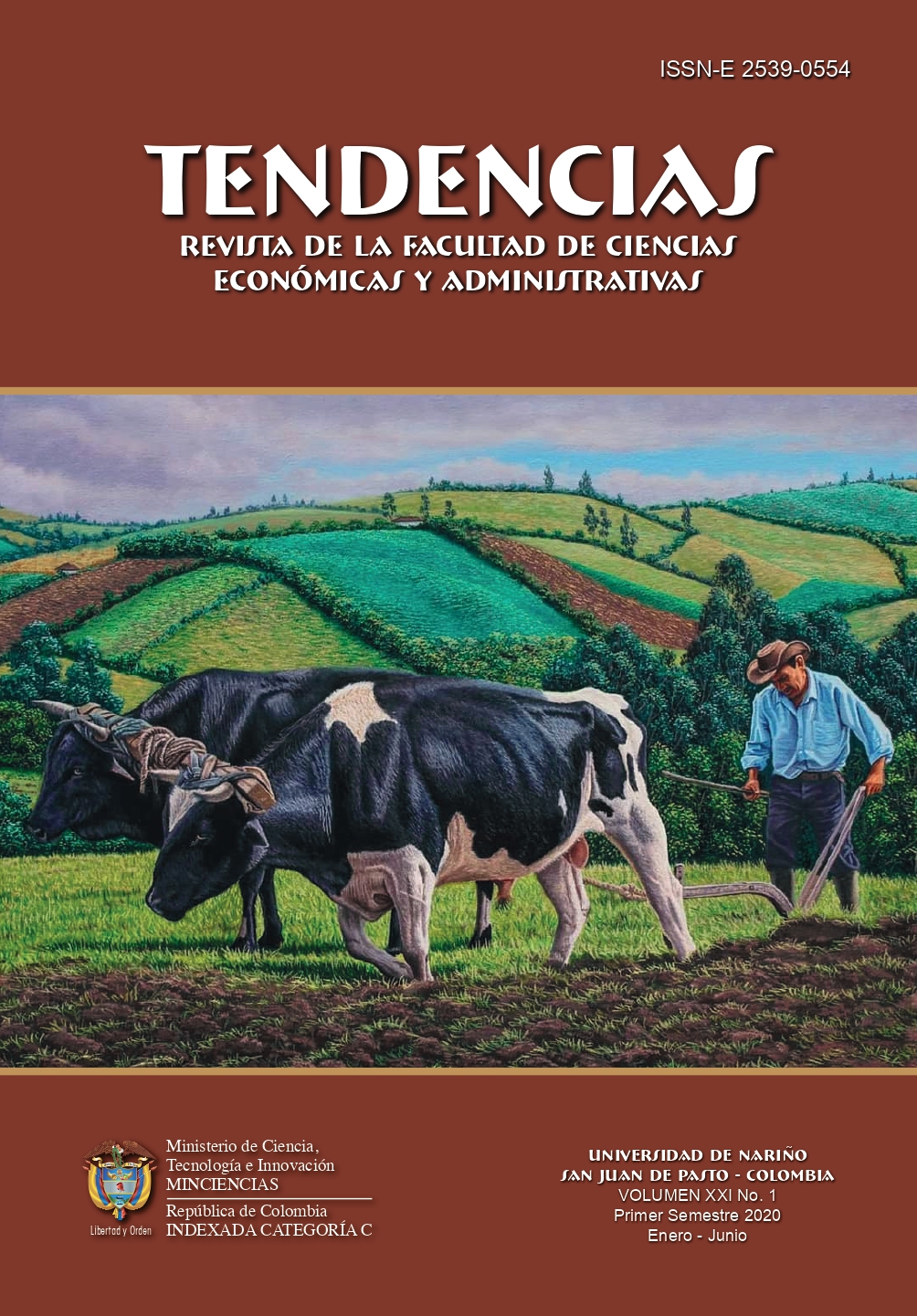Proposal of a support model for entrepreneurship that generates synergy with social innovation
DOI:
https://doi.org/10.22267/rtend.202101.131Keywords:
entrepreneurship, social innovation, principles, values, managementAbstract
The present investigation shows the advances obtained against the first steps of a proposal that will be called a model to support entrepreneurs, advanced in the University Corporation for Business and Social Development (CUDES), with a sample of 100 students, belonging to the programs of the University Institution and which aims to identify aspects that improve its subsequent implementation. The research is descriptive, surveys, interviews and classroom work were used to collect the information and its results provide us with valuable contributions to the proposal of the model that we call Sinermarketing, for CUDES and students as future entrepreneurs. Sinermarketing is recreated in the educational environment for students to develop competencies and apply their knowledge in topics related to entrepreneurship, social innovation, principles, values, respect for their environment, and business creation. The model is not exclusive and can be applied in any educational institution. As students advance in their studies, they must continue to provide support to achieve the goal of delivering innovative entrepreneurs and entrepreneurs to society. In accordance with the foregoing, to facilitate the management of entrepreneurship and the development of social innovation in the institution that carried out the study, a model is proposed that articulates the internal areas of entrepreneurship and research for the benefit of the entire community of students and its environment, thus managing to strengthen the nascent entrepreneur not to give up his attempt.
Downloads
References
(1) Asociación Colombiana de Emprendedores -ASEC- (2017). ¿Cuáles son las barreras del emprendimiento en Colombia? Recuperado el 10 de noviembre de 2019 de https://www.enter.co/especiales/empresas/barreras-emprendimiento-en-colombia/
(2) Boyd, H., Walker, O., Larréché, J., y Mullins, J. (2005). Administración del Marketing, Un Enfoque en la toma estratégica de decisiones. México. McGraw-Hill.
(3) CAF - Corporación Andina de Fomento - (2013). Emprendimientos en América Latina: Desde la subsistencia hacia la transformación productiva. Corporación Andina de Fomento. Panamericana Formas e Impresos S.A.
(4) Cardona, D., Alzate, J., y Lora, H. (2018). Estrategias para la gestión del talento humano en las asociaciones de yuqueros adscritas a Colfeyuca en Sucre, Colombia. Revista de Investigación, Desarrollo e Innovación, 9(1), 9-18. doi: https://doi.org/10.19053/20278306.v9.n1.2018.8501.
(5) CUDES Corporación Universitaria para el Desarrollo Empresarial y Social. (2010). Proyecto Educativo Institucional PEI. Recuperado de https://cudes.edu.co/wp- content/uploads/2014/11/proyecto_educativo_institucional.pdf.
(6) CUDES Corporación Universitaria para el Desarrollo Empresarial y Social. (2010). Plan Estratégico de Desarrollo Institucional. Recuperado de https://cudes.edu.co/wp-content/uploads/2014/11/plan_estrategico_de_desarrollo.pdf.
(7) CUDES. Corporación Universitaria para el Desarrollo Empresarial y Social. (2015). Definiciones sobre los proyectos de grado, los proyectos integradores y las asignaturas de práctica. Recuperado de https://cudes.edu.co/wp-content/uploads/2017/07/proyecto-grado-mayo-2017.pdf.
(8) Del Río, J., Cardona, D., y Guacarí, A. (2017). Responsabilidad social empresarial y construcción de la marca: una nueva mirada a las estrategias de gestión. Revista de Investigación, Desarrollo e Innovación, 8(1),49-60. doi: https://doi.org/10.19053/20278306.v8.n1.2017.7370.
(9) Gerente.com (2019). Casi que con la misma velocidad que se abren las empresas se cierran. Recuperado el 25 de abril de 2019 de https://gerente.com/co/casi-que-con-la-misma-velocidad-que-se-abren-las-empresas-se-cierran/
(10) Gómez, M., y Satizábal, K. (2011). Educación en emprendimiento: fortalecimiento de competencias emprendedoras en la Pontificia Universidad Javeriana Cali. Revista de Economía, Gestión y Desarrollo, No. 11, 121-151. Recuperado de http://revistaeconomia.puj.edu.co/html/articulos/Numero_11/SATIZABAL.pdf
(11) Gutiérrez O., Asprilla M., y Gutiérrez L. (2016). Estado del arte del emprendimiento empresarial en materia de ciencia, tecnología e innovación. Revista Universitaria Ruta, 18(2), 1-25. Recuperado a partir de https://revistas.userena.cl/index.php/ruta/article/view/795
(12) Jurado, I., y Morán, M. (2019). Gestión universitaria de la innovación social promovida desde espacios académicos relacionados con el emprendimiento, la investigación y la proyección social. Revista de investigación, desarrollo e innovación, 9 (2), 261-272. Recuperado de http://www.scielo.org.co/scielo.php?script=sci_arttextypid=S2027-83062019000100261
(13) Kaneko A. (2012). Emprendimiento, personalidad y variables sociodemográficas en estudiantes de Administración de un instituto de educación superior. Revista PsiqueMag, No. 1, 83-105.
(14) Kotler, P. (2013). Fundamentos de Marketing. México. Pearson Educación.
(15) Pérez P., y Gardey, A. (2010). Definición de sinergia. http://definicion.de/sinergia/
(16) Rodeiro P., Fernández L., Otero G., y Rodríguez S. (2008): La creación de empresas en el ámbito universitario: una aplicación de la teoría de los recursos. Revista Cuadernos de Gestión, Vol.8; No.2, pp. 11-28.
(17) Sampieri, R., Collado, C., y Lucio, P. (2004). Metodología de la investigación. Ciudad de México, México: McGraw Hill.
(18) Stanton, W. (2007). Fundamentos de Marketing, México, D.F. The McGraw-Hill Interamericana.
Published
How to Cite
Issue
Section
License
Those authors who have publications with this journal, accept the following terms:
This journal is licensed under a Creative Commons Reconocimiento-NoComercial 4.0 Internacional License. The articles can be copied, distributed, adapted and communicated publicly, as long as the credits of the work are recognized and the respective source is quoted. This work can not be used for commercial purposes.
To increase their visibility, documents are sent to databases and indexing systems.
The content of the items is the responsibility of each author, and does not compromise in any way, journal or institution.







































